Research on Film Formation Characteristics by Spraying on Unidiameter Vertical Interpenetrating Cylindrical Surfaces
Abstract
:1. Introduction
2. Modeling
2.1. The Air Spraying Process
2.2. Spray-Flow Field Model
2.3. Near-Wall Model
2.4. Eulerian Wall Film Model
3. Simulation and Experimental Details
3.1. Geometric Model and Fluid Regions
3.2. Meshing and Mesh Independence Validation
3.3. Set-Up and Boundary Conditions
3.4. Experimental Details
4. Results and Discussion
4.1. Flow Field Characteristics
4.1.1. Longitudinal Flow Field Characteristics
4.1.2. Near-Wall Flow Field Characteristics
4.2. Influence of Spraying Parameters on Film Characteristics
4.2.1. Geometric Features
4.2.2. Geometric Dimensions
4.2.3. Lateral Pressure
4.2.4. Spraying Distance
4.3. Experimental Validation
5. Conclusions
Author Contributions
Funding
Institutional Review Board Statement
Informed Consent Statement
Data Availability Statement
Conflicts of Interest
References
- Zhao, W.; Li, F.; Lv, X.; Chang, J.; Shen, S.; Dai, P.; Xia, Y.; Cao, Z. Research Progress of Organic Corrosion Inhibitors in Metal Corrosion Protection. Crystals 2023, 13, 1329. [Google Scholar] [CrossRef]
- Varela, F.; Tan, M.Y.; Forsyth, M. An overview of major methods for inspecting and monitoring external corrosion of on-shore transportation pipelines. Corros. Eng. Sci. Technol. 2015, 50, 226–235. [Google Scholar] [CrossRef]
- Zgonnik, P.V.; Kuzhaeva, A.A.; Berlinskiy, I.V. The Study of Metal Corrosion Resistance near Weld Joints When Erecting Building and Structures Composed of Precast Structures. Appl. Sci. 2022, 12, 2518. [Google Scholar] [CrossRef]
- Liu, Z.; Cheng, S.; Su, Y.; Duan, G.; Tan, J. Semantic Segmentation Based Spraying Trajectory Planning for Complex Product. IEE Trans. Ind. Inform. 2024, 44, 258–269. [Google Scholar] [CrossRef]
- Yang, X.; Yue, X.; Cai, Z.; Zhong, S. Research on the trajectory planning and global optimization strategy of cold spraying technique for complex products coating preparation. Robot. Intell. Autom. 2024, 44, 258–269. [Google Scholar] [CrossRef]
- Fogliati, M.; Fontana, D.; Garbero, M.; Vanni, M.; Baldi, G.; Donde, R. CFD simulation of paint deposition in an air spray process. JCT Res. 2006, 3, 117–125. [Google Scholar] [CrossRef]
- Pendar, M.R.; Rodrigues, F.; Páscoa, J.C.; Lima, R. Review of coating and curing processes: Evaluation in automotive industry. Phys. Fluids 2022, 34, 101301. [Google Scholar] [CrossRef]
- Ye, Q.; Shen, B.; Tiedje, O.; Domnick, J. Investigations of Spray Painting Processes Using an Airless Spray Gun. J. Energy Power Eng. 2013, 7, 74–81. [Google Scholar]
- Hoppe, F.; Breuer, M. A deterministic and viable coalescence model for Euler–Lagrange simulations of turbulent microbubble-laden flows. Int. J. Multiph. Flow 2018, 99, 213–230. [Google Scholar] [CrossRef]
- Tausendschön, J.; Kolehmainen, J.; Sundaresan, S.; Radl, S. Coarse graining Euler-Lagrange simulations of cohesive particle fluidization. Powder Technol. 2020, 364, 167–182. [Google Scholar] [CrossRef]
- Keser, R.; Battistoni, M.; Im, H.G.; Jasak, H. A Eulerian Multi-Fluid Model for High-Speed Evaporating Sprays. Processes 2021, 9, 941. [Google Scholar] [CrossRef]
- Payri, R.; Gimeno, J.; Martí-Aldaraví, P.; Martínez, M. Validation of a three-phase Eulerian CFD model to account for cavitation and spray atomization phenomena. J. Braz. Soc. Mech. Sci. Eng. 2021, 43, 1–15. [Google Scholar] [CrossRef]
- Domnick, J.; Scheibe, A.; Ye, Q. The simulation of electrostatic spray painting process with high-speed rotary bell atomizers. Part II: External charging. Part. Part. Syst. Charact. 2007, 23, 408–416. [Google Scholar] [CrossRef]
- Zhang, S.; Ma, X.; Hui, Z.; Liu, D.; Yu, G. Numerical simulation study on the effect of voltage on characteristics of spray coating on saddle ridge surface. Electroplat. Finish. 2021, 40, 1856–1864. [Google Scholar]
- Xie, X.; Wang, Y. Research on Distribution Properties of Coating Film Thickness from Air Spraying Gun-Based on Numerical Simulation. Coatings 2019, 9, 721. [Google Scholar] [CrossRef]
- Chen, W.; Chen, Y.; Wang, S.; Han, Z.; Lu, M.; Chen, S. Simulation of a Painting Arc Connecting Surface by Moving the Nozzle Based on a Sliding Mesh Model. Coatings 2022, 12, 1603. [Google Scholar] [CrossRef]
- Chen, S.; Chen, W.; Chen, Y.; Jiang, J.; Wu, Z.; Zhou, S. Research on Film-Forming Characteristics and Mechanism of Painting V-Shaped Surfaces. Coatings 2022, 12, 658. [Google Scholar] [CrossRef]
- Yang, G.; Wu, Z.; Chen, Y.; Chen, S.; Jiang, J. Modeling and Characteristics of Airless Spray Film Formation. Coatings 2022, 12, 949. [Google Scholar] [CrossRef]
- Yang, G.; Chen, Y.; Chen, S.; Zhang, F. Modeling of Film Formation in Airless Spray. J. Phys. Conf. Ser. 2022, 2179, 012024. [Google Scholar] [CrossRef]
- Yi, Z.; Mi, S.; Tong, T.; Li, K.; Feng, B. Simulation Analysis on Flow Field of Paint Mist Recovery with Single Nozzle for Ship Outer Panel Spraying Robot. Coatings 2022, 12, 450. [Google Scholar] [CrossRef]
- Yi, Z.; Mi, S.; Tong, T.; Li, K.; Feng, B.; Li, B.; Lin, Y. Simulation Analysis on the Jet Flow Field of a Single Nozzle Spraying for a Large Ship Outer Panel Coating Robot. Coatings 2022, 12, 369. [Google Scholar] [CrossRef]
- Wu, Z.; Chen, Y.; Liu, H.; Hua, W.; Duan, J.; Kong, L. A Review of the Developments of the Characteristics and Mechanisms of Airless Spraying on Complex Surfaces. Coatings 2023, 13, 2095. [Google Scholar] [CrossRef]
- Gao, Y.; Ierapetritou, M.G.; Muzzio, F.J. Determination of the Confidence Interval of the Relative Standard Deviation Using Convolution. J. Pharm. Innov. 2013, 8, 72–82. [Google Scholar] [CrossRef]
- Koewitsch, I.; Mehring, M. Carbon nitride materials: Impact of synthetic method on photocatalysis and immobilization for photocatalytic pollutant degradation. J. Mater. Sci. 2021, 56, 18608–18624. [Google Scholar] [CrossRef]
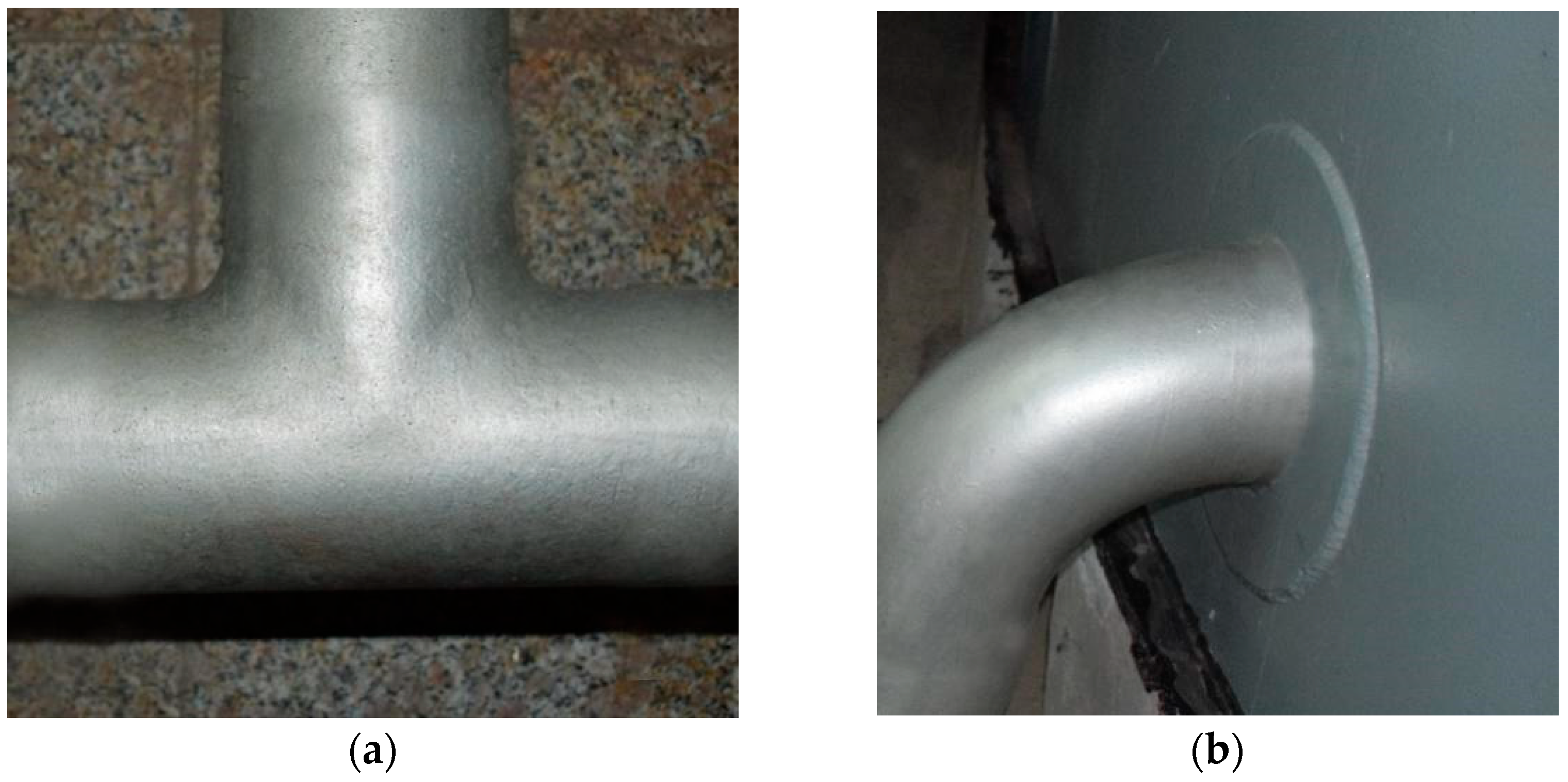
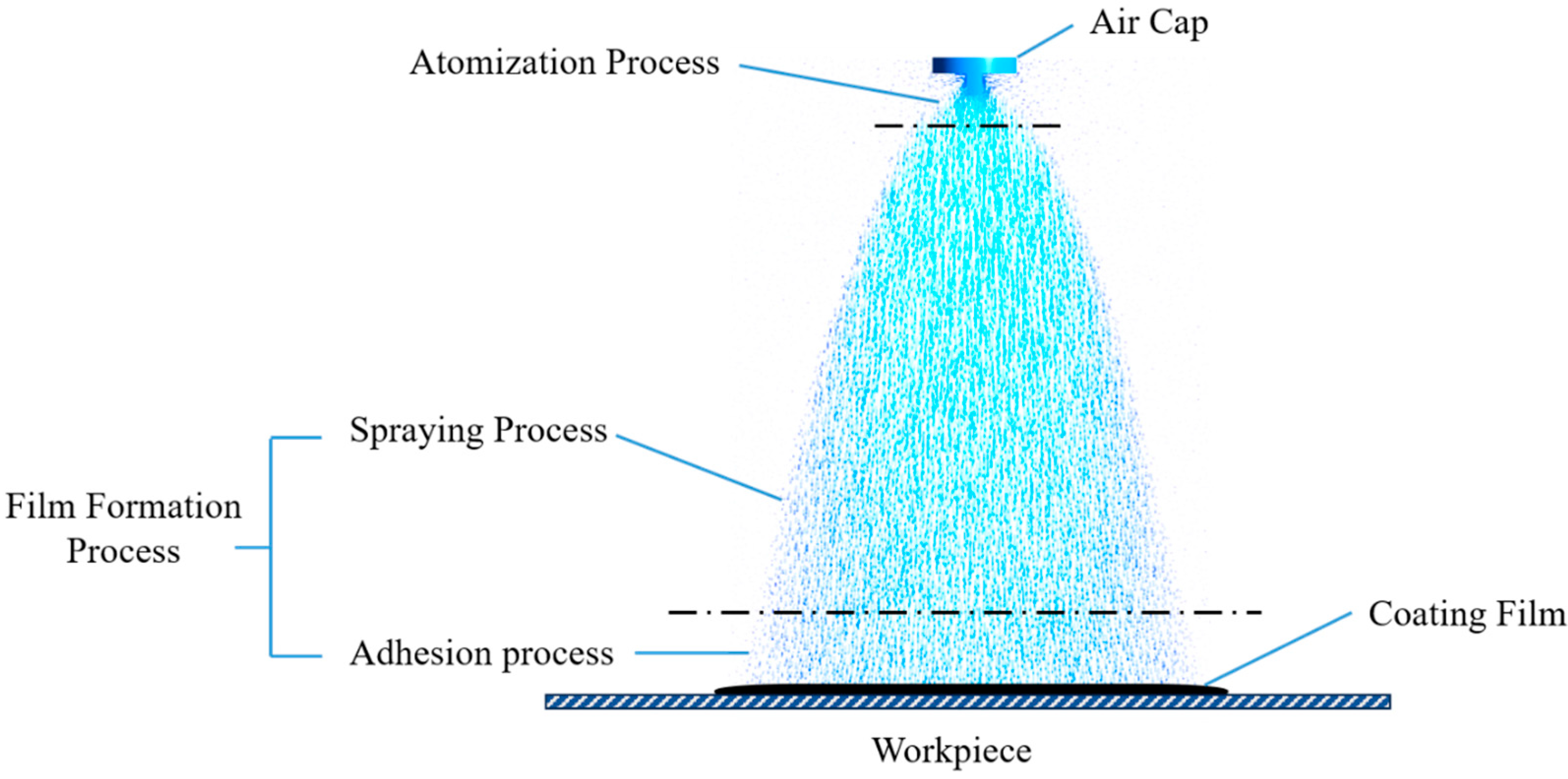


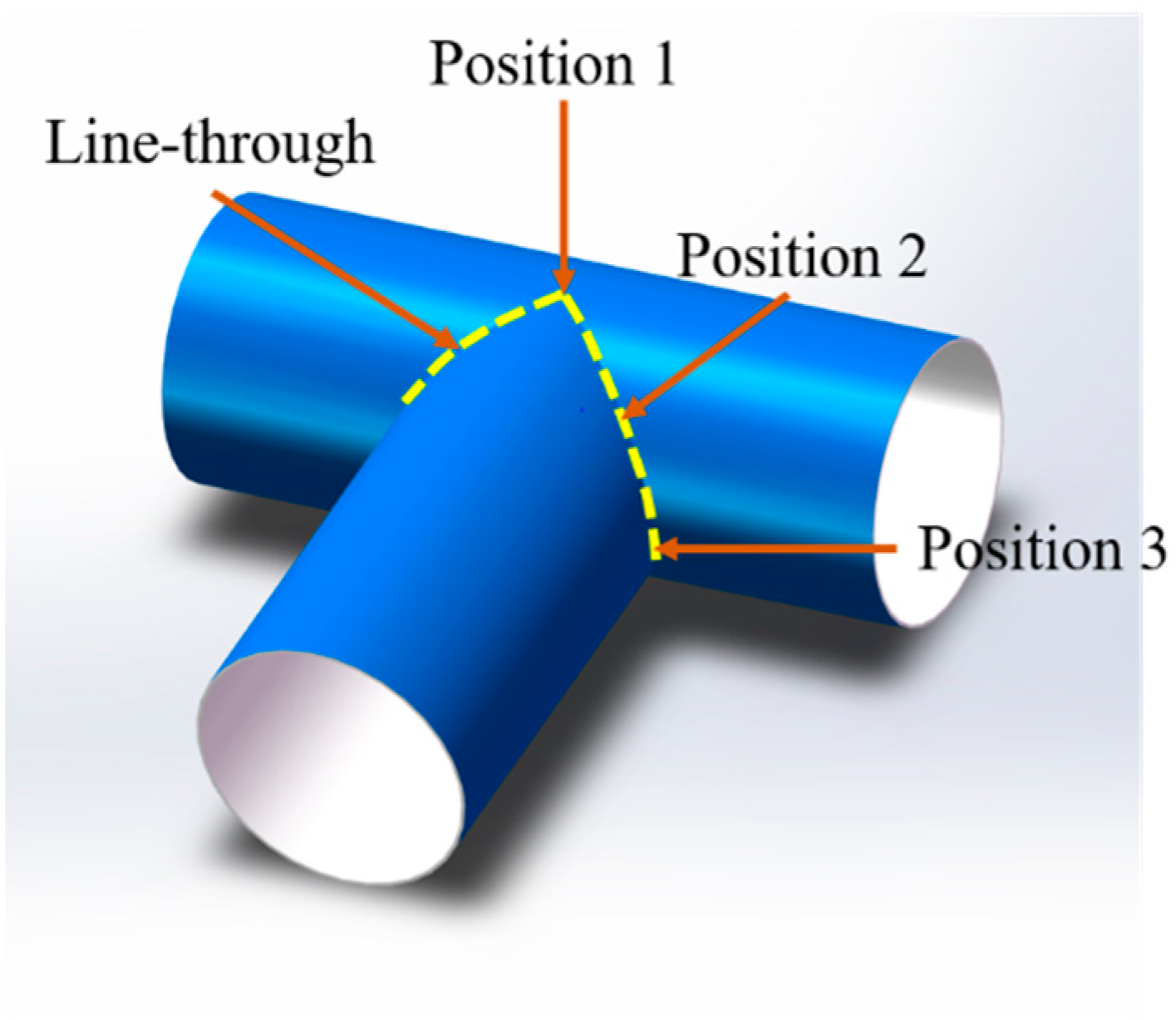












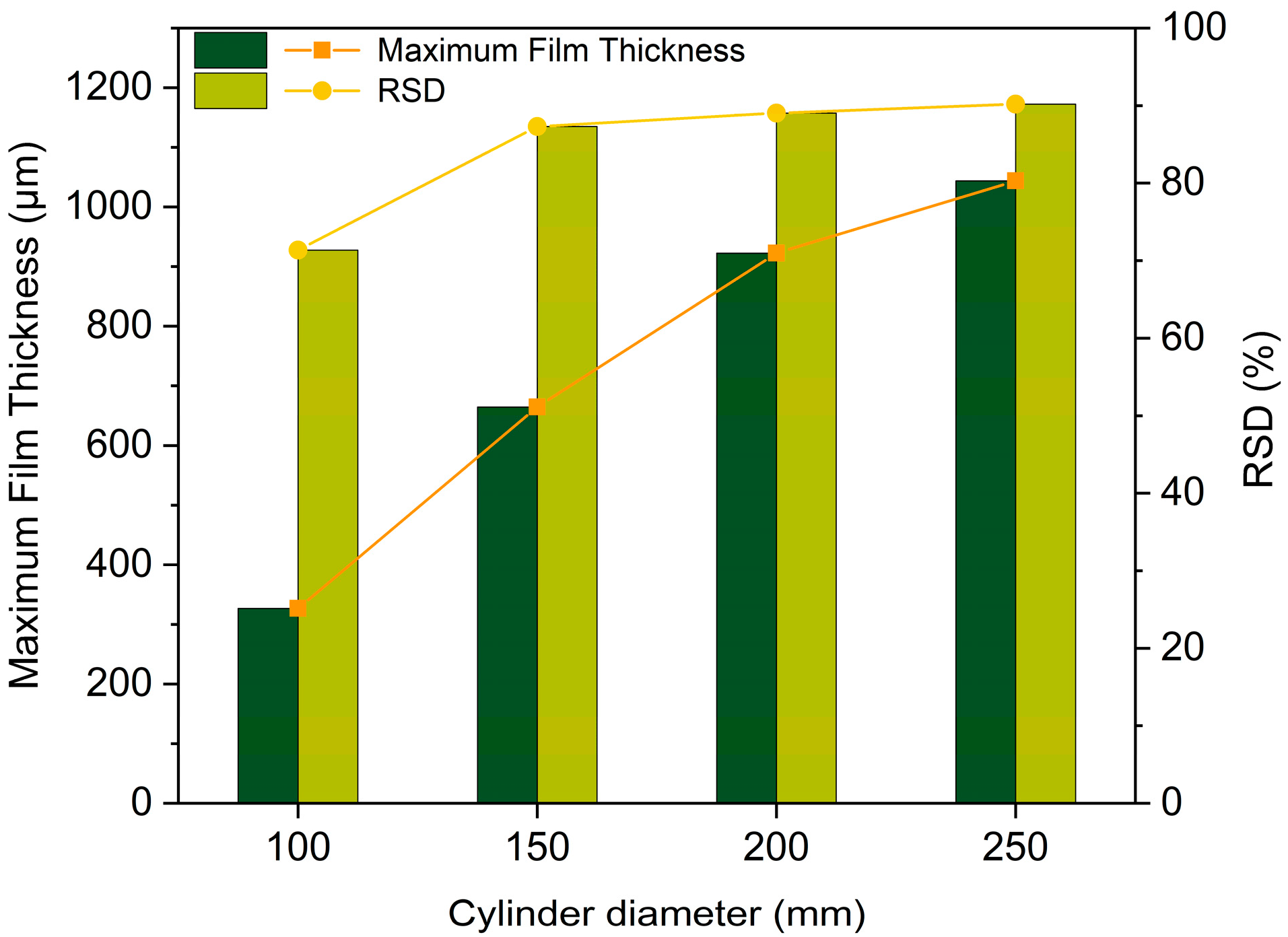


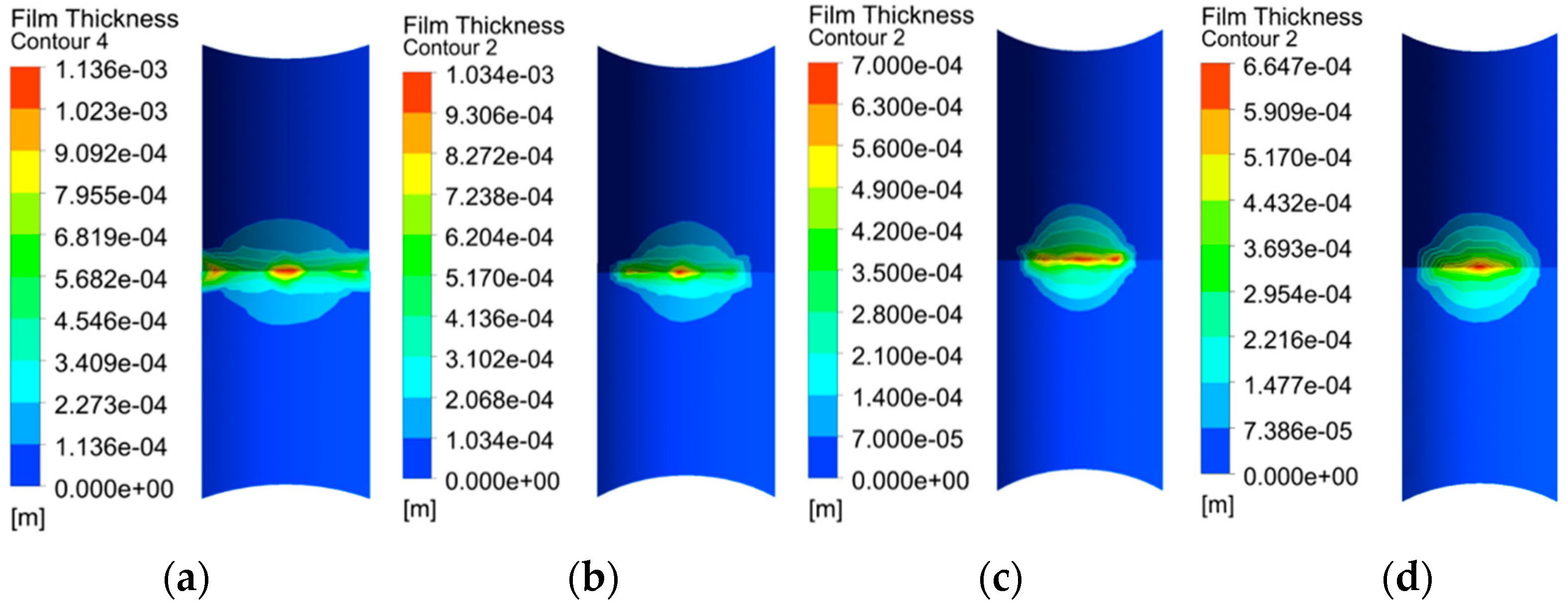
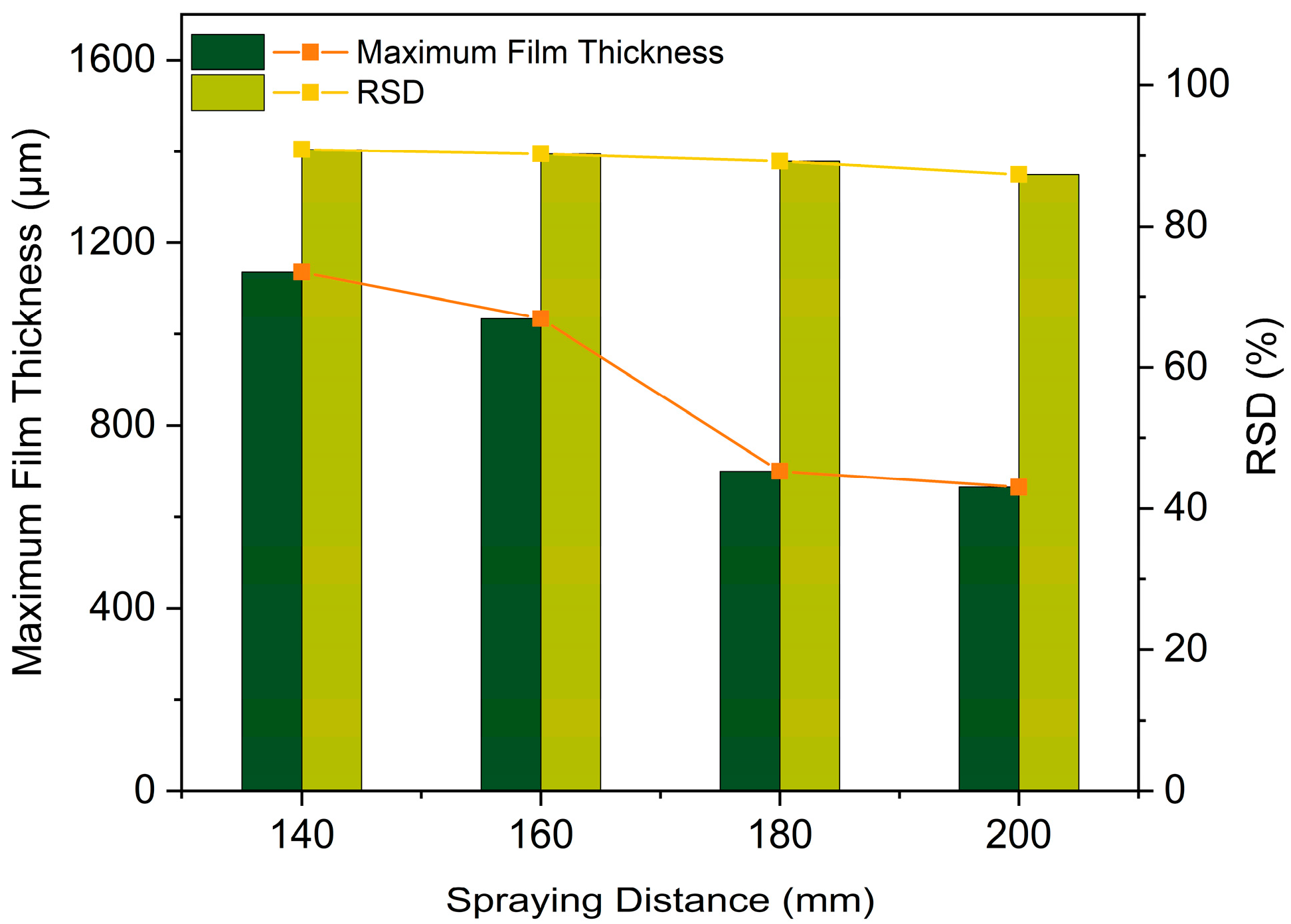
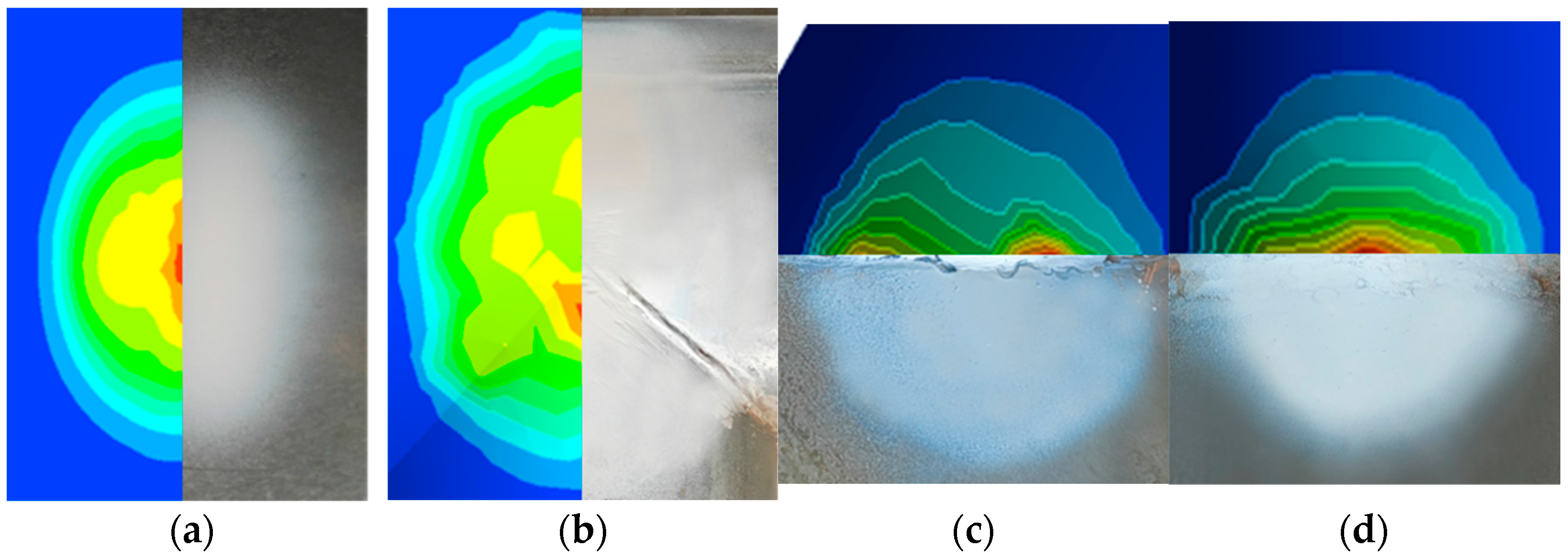
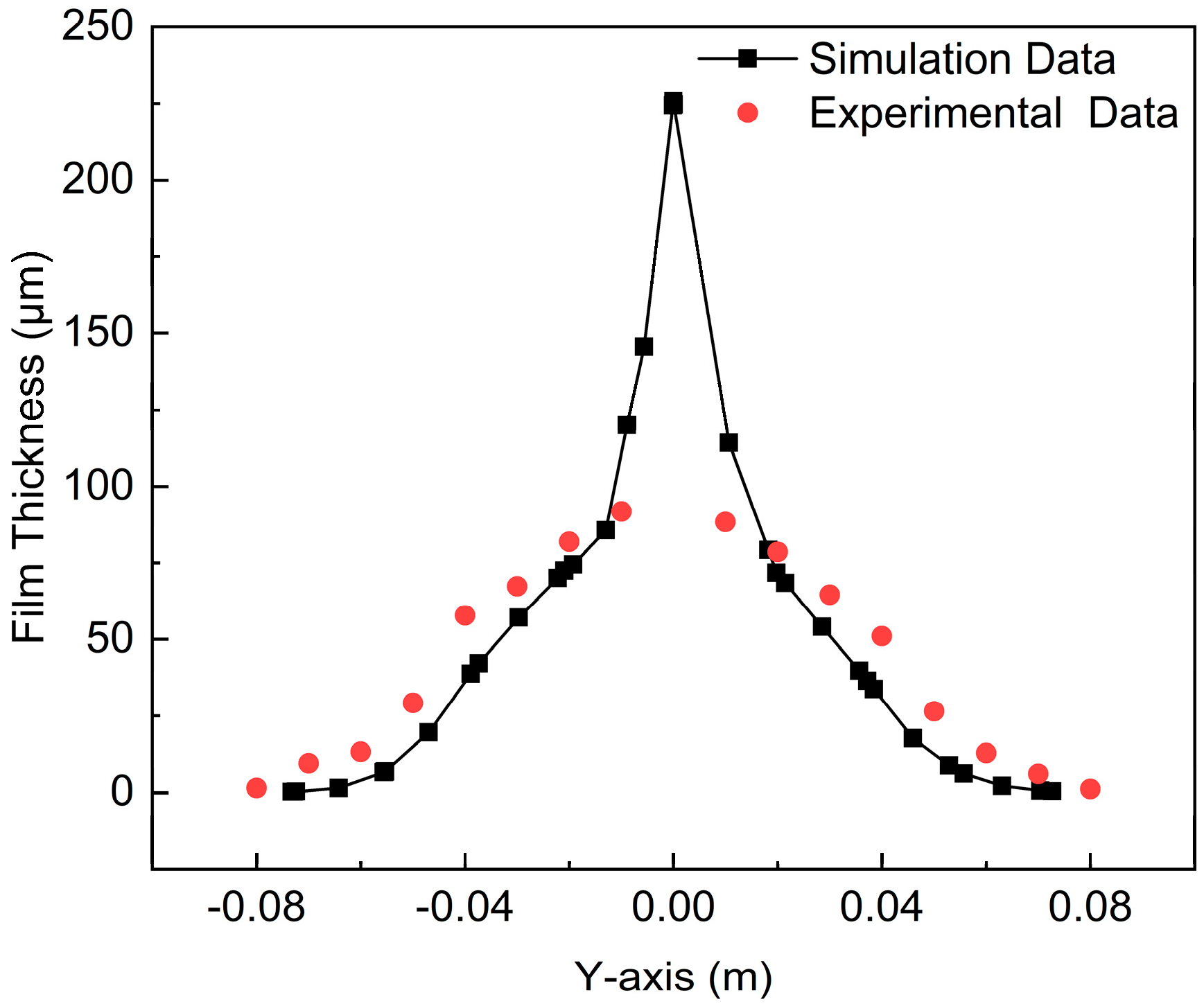

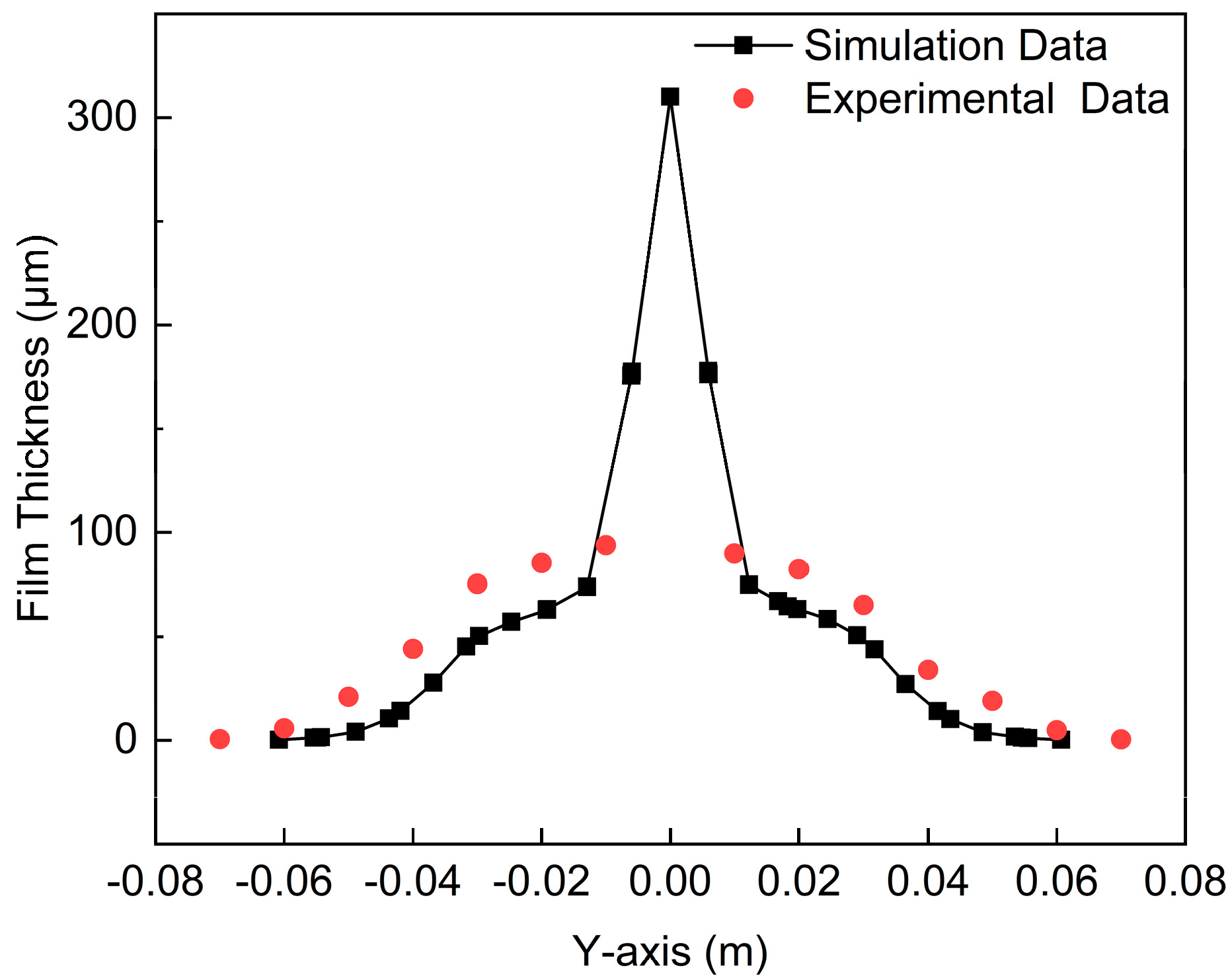
| Maximum Mesh Length (mm) | Cell Count | Average Mesh Quality | Average Skewness |
|---|---|---|---|
| 10.0 | 139,421 | 0.84148 | 0.22185 |
| 7.0 | 270,319 | 0.84719 | 0.21265 |
| 5.0 | 624,073 | 0.85139 | 0.20637 |
| 4.0 | 1,152,638 | 0.85362 | 0.20294 |
| 3.0 | 2,642,912 | 0.85563 | 0.19993 |
| 2.5 | 4,519,647 | 0.85598 | 0.19941 |
| 2.0 | 8,758,716 | 0.85685 | 0.19809 |
Disclaimer/Publisher’s Note: The statements, opinions and data contained in all publications are solely those of the individual author(s) and contributor(s) and not of MDPI and/or the editor(s). MDPI and/or the editor(s) disclaim responsibility for any injury to people or property resulting from any ideas, methods, instructions or products referred to in the content. |
© 2024 by the authors. Licensee MDPI, Basel, Switzerland. This article is an open access article distributed under the terms and conditions of the Creative Commons Attribution (CC BY) license (https://creativecommons.org/licenses/by/4.0/).
Share and Cite
Wu, Z.; Chen, Y.; Chen, S.; Duan, J.; Li, J. Research on Film Formation Characteristics by Spraying on Unidiameter Vertical Interpenetrating Cylindrical Surfaces. Coatings 2024, 14, 847. https://doi.org/10.3390/coatings14070847
Wu Z, Chen Y, Chen S, Duan J, Li J. Research on Film Formation Characteristics by Spraying on Unidiameter Vertical Interpenetrating Cylindrical Surfaces. Coatings. 2024; 14(7):847. https://doi.org/10.3390/coatings14070847
Chicago/Turabian StyleWu, Zhaojie, Yan Chen, Shiming Chen, Jimiao Duan, and Jiang Li. 2024. "Research on Film Formation Characteristics by Spraying on Unidiameter Vertical Interpenetrating Cylindrical Surfaces" Coatings 14, no. 7: 847. https://doi.org/10.3390/coatings14070847




